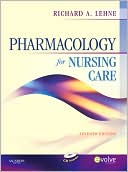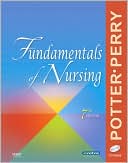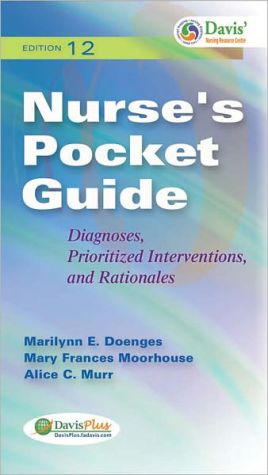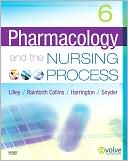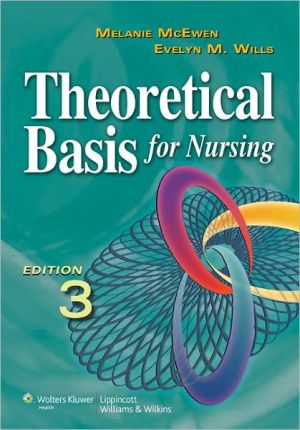The Neuman Systems Model
The Neuman Systems Model, Fifth Edition presents the most up-to-date and complete description of Betty Neuman's nursing theory. The Neuman Systems Model is a comprehensive framework of delivering holistic health care, and has become more and more relevant to current nursing practice due to increased attention to the topic of evidence-based care. This edition is a useful text for undergraduate, graduate theory, and clinical courses. The fifth edition provides current applications of the model...
Search in google:
Completely updated in a new edition, this book presents a look at the application of the Neuman Systems Model in nursing education and practice, with emphasis on social change, current trends, and future nursing needs. It includes specific guidelines for providing holistic systems based perspective for optimal client system care. Through the contributions of an international contingent of authors, the text offers diverse viewpoints of global health care concerns relevant to the 21st century. This book is a perfect resource for clinicians, researchers, and administrators in all health care disciplines. Roseanne H. Pruitt The book is an expanded version of earlier editions (l982 and 1989) with additional international and administrative uses. The book includes an explanation of the model with information on model development, then focuses primarily on use of the model in education, practice, and research. The purpose is to illustrate the model's relevance for the next century. Betty Neuman, RN, PhD, authored the model in 1970 and serves as author/editor of the text. The book reflects Dr. Neuman's continued encouragement of others in the nursing profession to use the model. The intended audience is broad, including all levels of nursing education and all areas of nursing practice. Nurse educators and other graduate level practitioners interested in how others have used the Neuman Systems Model will find the text helpful. The model is essentially unchanged since originally developed in the early 1970s. Dr. Neuman has added a spiritual variable to the individual and has further developed the propositions. Text references are essentially identical to earlier editions. Because of its complexity, most applications of the model address only a portion of the model. Levels of prevention from public health, the lines of resistance, and the five components of the client (physiological, psychological, sociocultural, developmental, and spiritual) are most frequently cited. Many chapter authors have redesigned and simplified the model. The chapter on theory testing appears to have been written for other purposes, with only a foreword by the author mentioning the Neuman model. The variety of uses is impressive, with curriculum application at all levels of nursing education, a variety of practice and administrativesettings, and use in more than 100 published research articles. The book serves primarily as a showcase for these utilization efforts.
Since the mid-1970s, when the Neuman Systems Model was first used for nursing education and practice, the model has both led and followed evolving health care trends. During the 1980s, the model gained worldwide popularity as a valid and appropriate structure for care across cultural and health care disciplinary boundaries. Throughout the 1990s, use of the model as a guide for clinical practice, research, education, and administration increased. We anticipate that use of the Neuman Systems Model will continue throughout the twenty-first century, given the increasing recognition of the need for a wholistic, systems approach to global health care concerns.\ This fourth edition of The Neuman Systems Model continues the tradition established with the previous three editions by including contributions that clearly reflect the broad, cross-cultural applicability of the model. Part One of this edition presents a detailed description of the Neuman Systems Model. Chapter 1 represents a reorganization of earlier presentations of the Neuman Systems Model. No changes in the content of the model have been made for this edition of the book.\ Part Two focuses on the Neuman Systems Model and Clinical Practice. Chapter 2 is a discussion of guidelines for Neuman Systems Model-based clinical practice. Chapter 3 is an integrative review of the Neuman Systems Model-based clinical practice literature. Chapter 4 is a presentation and discussion of clinical tools that have been derived from the Neuman Systems Model. Chapters 5 and 6 present specific applications of the Neuman Systems Model in nursing practice in the United States (Chapter 5) and Canada (Chapter 6).\ PartThree focuses on the Neuman Systems Model and Nursing Research. Chapter 7 presents guidelines for Neuman Systems Model-based nursing research. Chapter 8 is an integrative review of the Neuman Systems Model-based research literature. Chapter 9 is a presentation and discussion of research instruments that have been derived from or linked with the Neuman Systems Model. Chapters 10 and 11 present specific applications of the Neuman Systems Model in nursing research in the United States (Chapter 10) and Thailand (Chapter 11).\ Part Four focuses on the Neuman Systems Model and Nursing Education. Chapter 12 presents guidelines for Neuman Systems Model-based nursing education. Chapter 13 is an integrative review of the literature about the use of the Neuman Systems Model as a guide for nursing education. Chapter 14 is a presentation and discussion of educational tools that have been derived from the Neuman Systems Model. Chapters 15 and 16 present specific applications of the Neuman Systems Model in nursing education in the United States (Chapter 15) and Holland (Chapter 16).\ Part Five focuses on the Neuman Systems Model and Nursing Administration. Chapter 17 is a discussion of guidelines for Neuman Systems Model-based administration of nursing services. Chapter 18 is an integrative review of the Neuman Systems Model-based nursing administration literature. Chapters 19 and 20 present specific applications of the Neuman Systems Model as a guide for administration of nursing services in the United States (Chapter 19) and Holland (Chapter 20).\ Part Six addresses the Neuman Systems Model and the Future. In Chapter 21, Betty Neuman presents ideas about the future of the Neuman Systems Model.\ This edition also includes five appendices. Appendix A provides the definition of each Neuman Systems Model concept. Appendix B presents Betty Neuman's autobiography and a chronology of the development and utilization of the Neuman Systems Model. Appendix C includes the Neuman Systems Model Nursing Process Format and the Neuman Systems Model Assessment and Intervention Tool, as well as a family case study that illustrates the wellness-focused, comprehensive, and flexible features of the Neuman Systems Model. Appendix D is a description of the Neuman Systems Model Trustees Group and a list of current Trustees. Appendix E presents a comprehensive bibliography of Neuman Systems Model literature, including primary sources, commentaries, and applications in clinical practice, research, education, and administration.\ This fourth edition is suitable as a text for all levels of nursing education in all clinical specialties, as well as for continuing education programs. This edition also is a useful text for students, educators, clinicians, researchers, and administrators in all health care disciplines.\ We acknowledge the enthusiasm of users and would-be users of the Neuman Systems Model worldwide. Their interest in and questions about practical uses of the model provided the motivation for this edition.\ We offer our gratitude to all contributing authors for their willingness to share their most creative work with us and with the readers of this edition. We are grateful also for the continuing support of the Neuman Systems Model Trustees. Their commitment to the Neuman Systems Model certainly will assure its continuing contributions to the advancement of health care knowledge in general and nursing knowledge in particular.\ We extend our appreciation to Maura Connor, Executive Editor, Nursing, and Beth Ann Romph, Editorial Assistant, Nursing, of Prentice Hall Health, for their support, encouragement, and assistance throughout the preparation of this edition. We also acknowledge the essential contributions of all the people who facilitated the production of this edition, with special appreciation to Linda Begley.\ Betty Neuman, PhD, FAAN\ Jacqueline Fawcett, PhD, FAAN
ContributorsPrefaceAcknowledgmentsForeword1The Neuman Systems Model32Through the Looking Glass Back to the Future633The Spiritual Variable: Essential to the Client System77Introduction774The Neuman Systems Model Revisited935Nursing Care for the People of a Small Planet: Culture and the Neuman Systems Model1016Nurses' Role in World Catastrophic Events: War Dislocation Effects on Serbian Australians1197Family Health and the Neuman Systems Model1338Cultural Considerations in a Neuman-Based Curriculum1479Curriculum Transition Based on the Neuman Systems Model: Los Angeles County Medical Center School of Nursing16310Teaching Content and Process of the Neuman Systems Model17511Integration of the Neuman Systems Model into the BSN Curriculum at the University of Texas at Tyler18312Neuman-Based Associate Degree Programs: Past, Present, and Future19713The Neuman Systems Model in Clinical Evaluation of Students21514The Neuman Systems Model in Cooperative Baccalaureate Nursing Education: The Minnesota Intercollegiate Nursing Consortium Experience22715The Neuman Systems Model and Physical Therapy Educational Curricula23116Cognitive Impairment: Use of the Neuman Systems Model24917Applying the Neuman Systems Model to Psychiatric Nursing Practice26318The Neuman Systems Model for Critical Care Nursing: A Framework for Practice27519Application of the Neuman Systems Model to Gerontological Nursing29320Application of the Neuman Systems Model to Perinatal Nursing30921Using Neuman for a Stable Parent Support Group in Neonatal Intensive Care32122Assessing and Meeting the Needs of Home Caregivers Using the Neuman Systems Model33123A Systems Approach to the Health of Nursing and Health Care Organizations34724TQM and the Neuman Systems Model: Education for Health Care Administration36525Care Management of Pregnant Substance Abusers Using the Neuman Systems Model37726Implementing the Neuman Model in a Psychiatric Hospital38727Neuman Implementation in a Canadian Psychiatric Facility39728Oklahoma State Public Health Nursing: Neuman-Based40729Neuman-Based Education, Practice, and Research in a Community Nursing Center41530The Neuman Systems Model Adapted to a Continuing Care Retirement Community43131Theory Testing and Theory Support: Principles, Challenges, and a Sojourn into the Future44732Constructing Conceptual-Theoretical-Empirical Structures for Research Future Implications for Use of the Neuman Systems Model45933The Neuman Model in Nursing Research: An Update473Editorial Comments49634Nephrology Practice and Directions for Nursing Research49935Future Directions for Research with the Neuman Systems Model50936The Neuman Model Examples of its Use in Canadian Educational Programs52137Community/Public Health Nursing in Canada: Use of the Neuman Systems Model in a New Paradigm52938Neuman-Based Experiences of the Middlesex-London Health Unit53739The Neuman Systems Model in a Chronic Care Facility: A Canadian Experience54940Community-as-Client Assessment: A Neuman-Based Guide for Education and Practice56741The Spiritual Variable: A World View58142Utilization of the Neuman Systems Model: University of South Australia59143Use of the Neuman Systems Model in England: Abstracts59944Community Nursing in the United Kingdom: A Case for Reconciliation Using the Neuman Systems Model60745In Wales: Using the Model in Community Mental Health Nursing62146In Holland: Application of the Neuman Model in Psychiatric Nursing62947A Structure for Documenting Primary Health Care in Sweden Using the Neuman Systems Model63748Brief Abstracts: Use of the Neuman Systems Model in Sweden65349Implications for Use of the Neuman Systems Model in Occupational Health Nursing65750In Conclusion - Toward New Beginnings671Bibliography704Index719
\ Roseanne H. PruittThe book is an expanded version of earlier editions (l982 and 1989) with additional international and administrative uses. The book includes an explanation of the model with information on model development, then focuses primarily on use of the model in education, practice, and research. The purpose is to illustrate the model's relevance for the next century. Betty Neuman, RN, PhD, authored the model in 1970 and serves as author/editor of the text. The book reflects Dr. Neuman's continued encouragement of others in the nursing profession to use the model. The intended audience is broad, including all levels of nursing education and all areas of nursing practice. Nurse educators and other graduate level practitioners interested in how others have used the Neuman Systems Model will find the text helpful. The model is essentially unchanged since originally developed in the early 1970s. Dr. Neuman has added a spiritual variable to the individual and has further developed the propositions. Text references are essentially identical to earlier editions. Because of its complexity, most applications of the model address only a portion of the model. Levels of prevention from public health, the lines of resistance, and the five components of the client (physiological, psychological, sociocultural, developmental, and spiritual) are most frequently cited. Many chapter authors have redesigned and simplified the model. The chapter on theory testing appears to have been written for other purposes, with only a foreword by the author mentioning the Neuman model. The variety of uses is impressive, with curriculum application at all levels of nursing education, a variety of practice and administrativesettings, and use in more than 100 published research articles. The book serves primarily as a showcase for these utilization efforts.\ \ \ \ \ From The CriticsReviewer: Roseanne H. Pruitt, PhD, RNCS (Clemson University School of Nursing)\ Description: The book is an expanded version of earlier editions (l982 and 1989) with additional international and administrative uses. The book includes an explanation of the model with information on model development, then focuses primarily on use of the model in education, practice, and research. \ Purpose: The purpose is to illustrate the model's relevance for the next century. Betty Neuman, RN, PhD, authored the model in 1970 and serves as author/editor of the text. The book reflects Dr. Neuman's continued encouragement of others in the nursing profession to use the model. \ Audience: The intended audience is broad, including all levels of nursing education and all areas of nursing practice. Nurse educators and other graduate level practitioners interested in how others have used the Neuman Systems Model will find the text helpful. \ Features: The model is essentially unchanged since originally developed in the early 1970s. Dr. Neuman has added a spiritual variable to the individual and has further developed the propositions. Text references are essentially identical to earlier editions. \ Assessment: Because of its complexity, most applications of the model address only a portion of the model. Levels of prevention from public health, the lines of resistance, and the five components of the client (physiological, psychological, sociocultural, developmental, and spiritual) are most frequently cited. Many chapter authors have redesigned and simplified the model. The chapter on theory testing appears to have been written for other purposes, with only a foreword by the author mentioning the Neuman model. The variety of uses is impressive, with curriculum application at all levels of nursing education, a variety of practice and administrative settings, and use in more than 100 published research articles. The book serves primarily as a showcase for these utilization efforts.\ \

